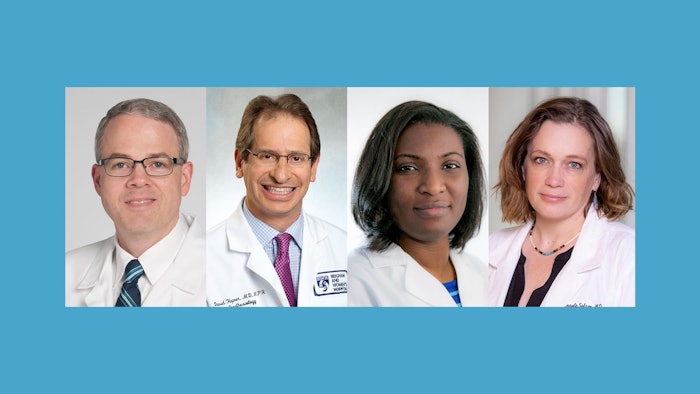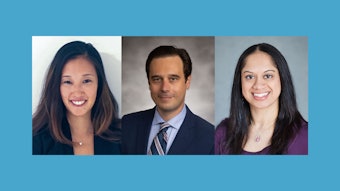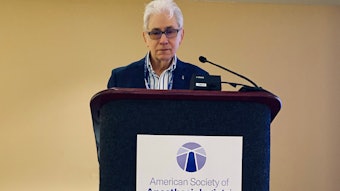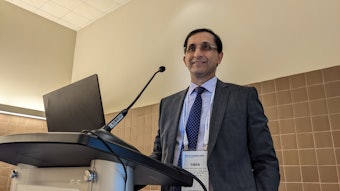More than patient prep
Preoperative clinics are evolving to offer patient care not just before surgery, but in the long-term as well.

Preoperative clinics are continuing to evolve within the perioperative setting beyond simply preparing and optimizing a patient for surgery. They have the potential to go beyond that and help improve their long-term health.
Today's session, “You Can Do That in a Preoperative Clinic?” will explore three advanced uses for preoperative clinics: high-risk obstetric consultation, home sleep apnea testing, and out-of-state telemedicine.
Session moderator Kenneth Cummings, MD, MS, FASA, DFPM, Staff Anesthesiologist at Cleveland Clinic and Director of the Center for Perioperative Medicine in the Integrated Hospital-Care Institute, said it’s time to move away from the mindset that a preoperative clinic “clears” a patient for surgery.
“That’s not the true value of these clinics,” he said. “Perioperative medicine [including preoperative clinics] is a dynamic, growing field with new developments coming at a rapid pace.”
Session panelist David Hepner, MD, MPH, FASA, said one of those developing areas is high-risk obstetric consultations. These types of consultations can allow anesthesiologists to collaborate with other specialists caring for the patient and her baby to formulate a peripartum plan, while at the same time ensuring that the patient is involved in these discussions. Anesthesiologists, Dr. Hepner said, can play a key role in these consultations.
“Beyond providing labor analgesia or anesthesia for delivery, anesthesiologists contribute to early risk stratification, peridelivery planning, and multidisciplinary communication,” he said. “Through antenatal consultations, anesthesiologists can assess complex comorbidities and prior anesthesia concerns, develop safe anesthetic and analgesic plans, and ensure their patients receive care in the most appropriate setting — including referral to higher-level maternal facilities when needed.”
Dr. Cummings said another area of growth is in the treatment of obstructive sleep apnea (OSA), a highly prevalent condition that is largely undiagnosed. He said preoperative clinics can be used for screening and initiating treatment of common illnesses like OSA that can have implications throughout the perioperative process.
“With the advent of home sleep apnea testing, this can now be done quickly and cost-effectively in the preoperative period,” he said.
Panelist Obianuju Okocha, MD, Associate Professor of Anesthesiology at Northwestern University Feinberg School of Medicine and Medical Director of the Preoperative Clinic at Northwestern Memorial Hospital in Chicago, said OSA patients are at increased risk of perioperative complications, unanticipated hospital admissions, and increased length of stay.
“Typically, surgical patients who are at risk for OSA would require a referral and separate visit with sleep medicine physicians, which is rarely feasible in the preoperative period,” she said. “I will talk about the rationale for — and logistics of — implementing a home sleep apnea testing program within an anesthesiology-led preoperative clinic.”
The third growing area of preoperative clinics is telemedicine, which saw a significant surge during the COVID-19 pandemic. Dr. Cummings said it has now evolved into a valuable tool for preoperative medicine.
“A growing body of literature shows that it is an effective venue for preoperative evaluation and has many other benefits,” he said.
Session presenter Angela Selzer, MD, FASA, DFPM, Professor of Clinical Practice in the Department of Anesthesiology at the University of Colorado School of Medicine in Aurora, Colorado, said those benefits can extend to anesthesiologists using out-of-state telemedicine for preoperative optimization.
“Patients from other states coming to our hospitals for surgeries are often unable to be seen by anesthesiologists in advance of surgery for a comprehensive evaluation,” she said. “The first evaluation these patients receive by an anesthesiologist is often in the preop area on the day of surgery. Unfortunately, the patients may not be optimized, have had their medications managed properly, or had the recommended testing completed.”
This, she said, is where telemedicine can play a crucial role in the preoperative process.
“By ensuring that practitioners in the preoperative clinic are able to provide telehealth visits to out-of-state patients, we are able to take advantage of the opportunity to have a number of weeks to optimize a patient before surgery and obtain additional tests or subspecialist evaluations,” she said.
Dr. Cummings said he hopes people will walk away from Monday’s session inspired to see what other services and programs they can develop in their own preoperative clinics by leveraging technology and local expertise.
“Anesthesiologists are ideally suited to perioperative medicine,” he said. “We work naturally in perioperative teams and have in-depth knowledge about the perioperative period as well as a familiarity with the health care system that informs preoperative optimization, multidisciplinary planning, and even population health.”





